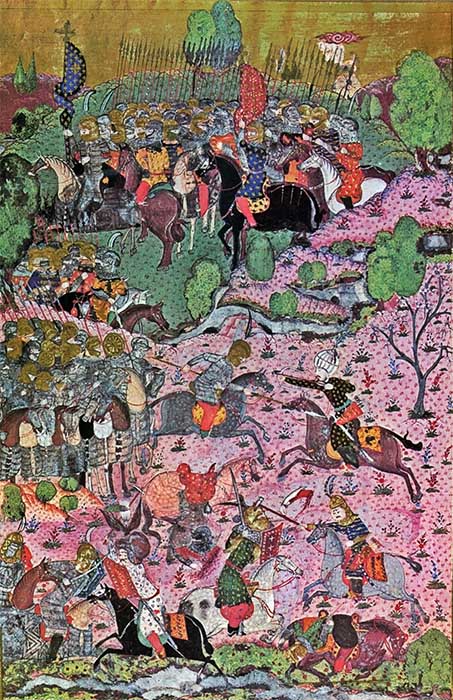
Stash of 7,000 Coins Found in Hungary, Revealing Story of National Trauma
A recent post from a Hungarian museum curator on Facebook tells of the discovery of “rare treasures of magnitude,” relating to the Turkish devastation following the Battle of Mohács. The news referred to archaeologists excavating a site near Újlengyel in central Hungary, who unearthed approximately 7,000 gold and silver coins.
Fought on 29 August 1526 AD, near Mohács in the Kingdom of Hungary, the Battle of Mohács was one of the most consequential battles in central European history. The forces of the Kingdom of Hungary and its allies, led by Louis II, clashed with armies from the Ottoman Empire, led by Suleiman the Magnificent. The Ottoman victory at the Battle of Mohács, followed by the death of Louis II as he fled the battle, marked the end of the Jagiellonian Dynasty in Hungary and Bohemia, and the end of the Middle Ages in Hungary.
- Archaeologists Discover a Huge Stash of Medieval Coins in Hungary
- Massive Roman Denarii Hoard From the ‘Vandals’ Last Stand’ Found
- Stashed Coin Hoard From Hapsburg Revolt Unearthed in Slovakia
The mediaeval coin expert from Ferency Museum, Balázs Nagy, assisted by the Community Archaeological Association and a team of volunteers, undertook a two-day expedition on a hill near the site of the Battle of Mohács. As the archaeologists and volunteers dug down through a small shaft they discovered a broken mediaeval vessel, and around it, “thousands of ancient gold and silver coins.”

The excavations which culminated in the discovery of a stash of gold and silver coins in Hungary, took place near Mohács, where the Battle of Mohács, one of the most consequential battles in central European history, took place. The image shows a Turkish miniature of the Battle of Mohács. (Public domain)
A Rare Collection of Ancient Gold and Silver Coins
The museum’s Facebook post revealed that the newly discovered coin collection consisted of “four gold coins and seven thousand silver coins.” The four gold coins were issued during the reign of Matthias I, the king of Hungary from 1458 to 1490 AD. After conducting several successful military campaigns, Matthias was elected King of Bohemia in 1469 AD and adopted the title Duke of Austria in 1487.
The silver coins comprised rare examples issued by Pope Pius, who ruled between 1458 and 1464 AD. Roman silver denarius’ from the reign of Lucius Verus, the Roman emperor who ruled from 161 to 169 AD, were also discovered. Many of the coins date back to between 1516 and 1526 AD, when Louis II ruled all of Hungary and Bohemia. The archaeologists said that when the collection of coins was buried, their worth would have been enough to buy “seven horses,” and they compared this to the value of a modern luxury car.


The collection of 7,000 gold and silver coins was buried near Újlengyel in Hungary. According to archaeologists, their worth would have been enough to buy “seven horses,” an amount comparable to the value of a modern luxury car. (Ferenczy Museum Center)
This Treasure Hoard Was Blood Money
The museum archaeologists are still trying to determine exactly why someone was inspired to bury this hoard of gold and silver coins. However, an article in Nature World News says they hypothesize that the people may “have planted the coins due to fear of attacks from the Ottoman Empire in 1526 AD.” Considering the hyper-violence that occurred in August and September of 1526 AD, it becomes understandable why such a treasure might have been hidden.
An article in New World Encyclopedia explains that “the Hungarians took many casualties from the skillfully handled Turkish artillery.” Those who did not flee “were surrounded and killed or captured.” The king left the battlefield sometime around twilight but was thrown from his horse in a river at Csele and died. It is generally accepted that more than 14,000 Hungarian soldiers were killed in the initial battle, but in the aftermath Suleiman showed no mercy, kept no prisoners and slaughtered 2,000 notable Hungarian leaders.

The Battle of Mohács as depicted by The Battle of Mohács. In the context of the hyper-violence of 1526, it is understandable that someone would have hidden such a stash of valuable gold and silver coins in Hungary. (Public domain)
A Treasure That Survived Hell
Their victory at the Battle of Mohács did not give the Ottomans the security they desired, and it was not until 1541 AD that the they finally captured and occupied the city of Buda. Christian armies besieged Buda several times during the 1500s and Suleiman eventually died at the Battle of Szigetvár in 1566 AD. His forces failed to siege the city of Eger, which held strong until 1596 AD, but when it fell, so too did independent Hungarian resistance, bringing to a bloody end an independent and once powerful European nation.
The Battle of Mohács is seen by many Hungarians as the decisive downward turning point in the country's history, defined by the New World Encyclopedia as “a national trauma persisting in the folk memory.” The subsequent two centuries of perpetual warfare between the two empires, Habsburg and Ottoman, destroyed the Hungarian countryside and decimated the population. However, this stash of seven thousand gold and silver coins was buried so well that it resisted five centuries of hoofs, battles, fires and agriculture.
Top image: The discovery of a massive stash of coins in Hungary, including four gold coins, paves the way for looking at the history of the Battle of Mohács, as well as the suffering and trauma it caused. Source: Ferenczy Museum Center
By Ashley Cowie















